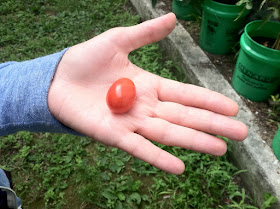By Steve Siciliano
If you’re a winemaker you know how gratifying it is when the cork is pulled from one of your nicely aged, home-made creations. Whether that wine was produced from a Winexpert ingredient kit, a can of Vintner's Harvest fruit base, or from raw materials procured from backyard gardens and fruit stands, there is wonderful sense of fulfillment when you’re finally able to enjoy the fermented fruits of a labor that inherently involves a degree of delayed gratification. While drinking a hand-crafted product from the aforementioned sources can be extremely rewarding, it seems to me that the reward factor is intensified when the cork is popped from a bottle of wine that was produced from fresh grapes.
Unfortunately getting your hands on fresh grapes is not as easy as procuring ingredients and raw materials from winemaking supply stores, farmers markets or home gardens, and in response to this we are passing along two wine-grape order forms sent to us by separate yet trusted sources. The first is from our friends at Taylor Ridge down in Allegan who are now taking orders for this year’s harvest. The second is for grapes from the Lodi region of California. In the case of Taylor Ridge please note that you will have to place orders with them directly and they will notify you when the grapes are ready for pickup. You will also have to contact the folks for the Lodi grapes and arrange prepayment with them. However, as a service to our customers, you can arrange to have your prepaid orders of the California grapes delivered directly to our store.
Order forms are available for download
by clicking here.
We will be offering the free use of our crusher/de-stemmer and presses from 9am to 4pm on the five consecutive Saturdays beginning with the 24th of September and ending with October 22nd. On these particular Saturdays, we will be showing folks how to use the equipment and how to adjust their juice for sugar and acidity. Also, if so desired (and for a nominal fee), the equipment can be rented on-premise on days other than the specified Saturdays. All crushing, de-stemming, and pressing will take place in the parking lot behind Siciliano's. Please contact us for more details.































